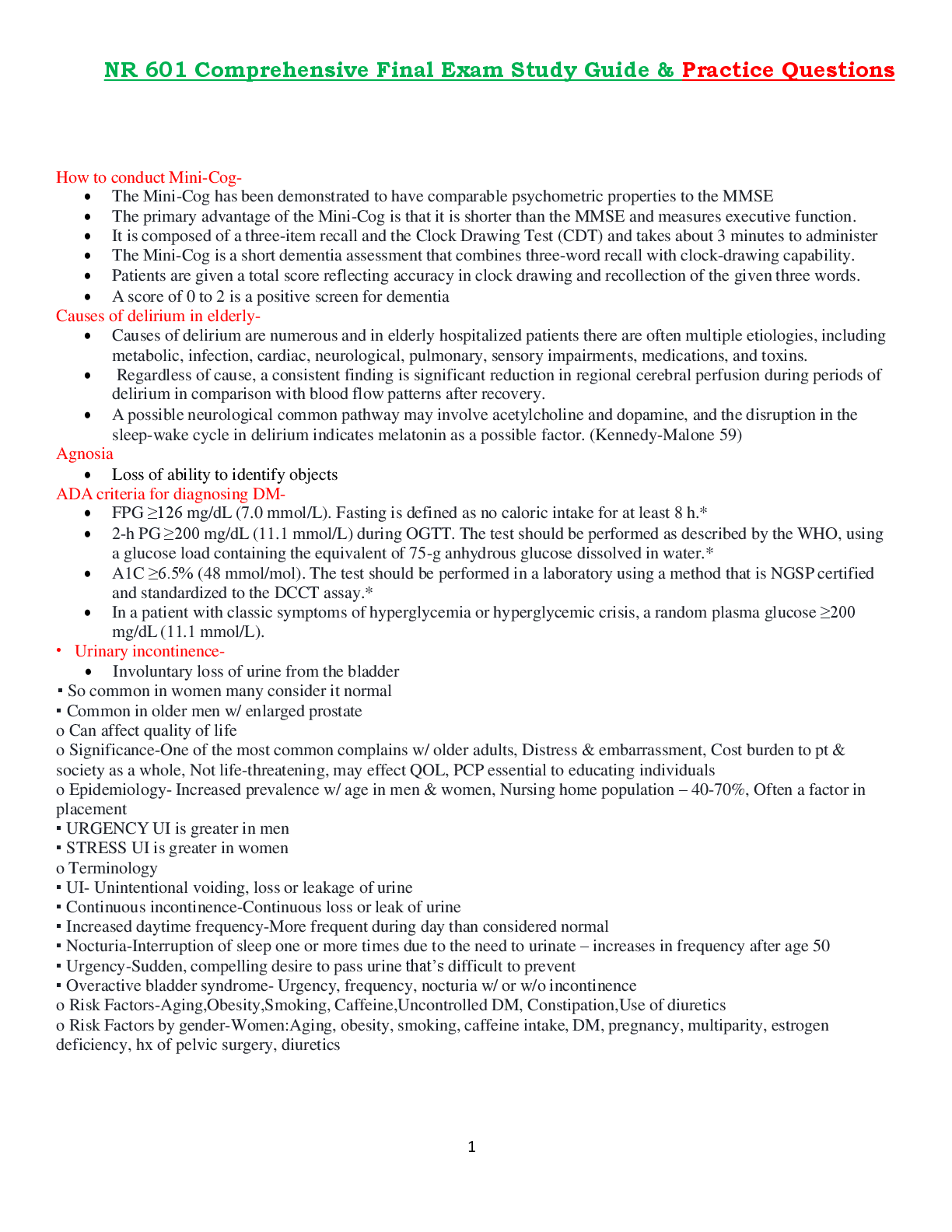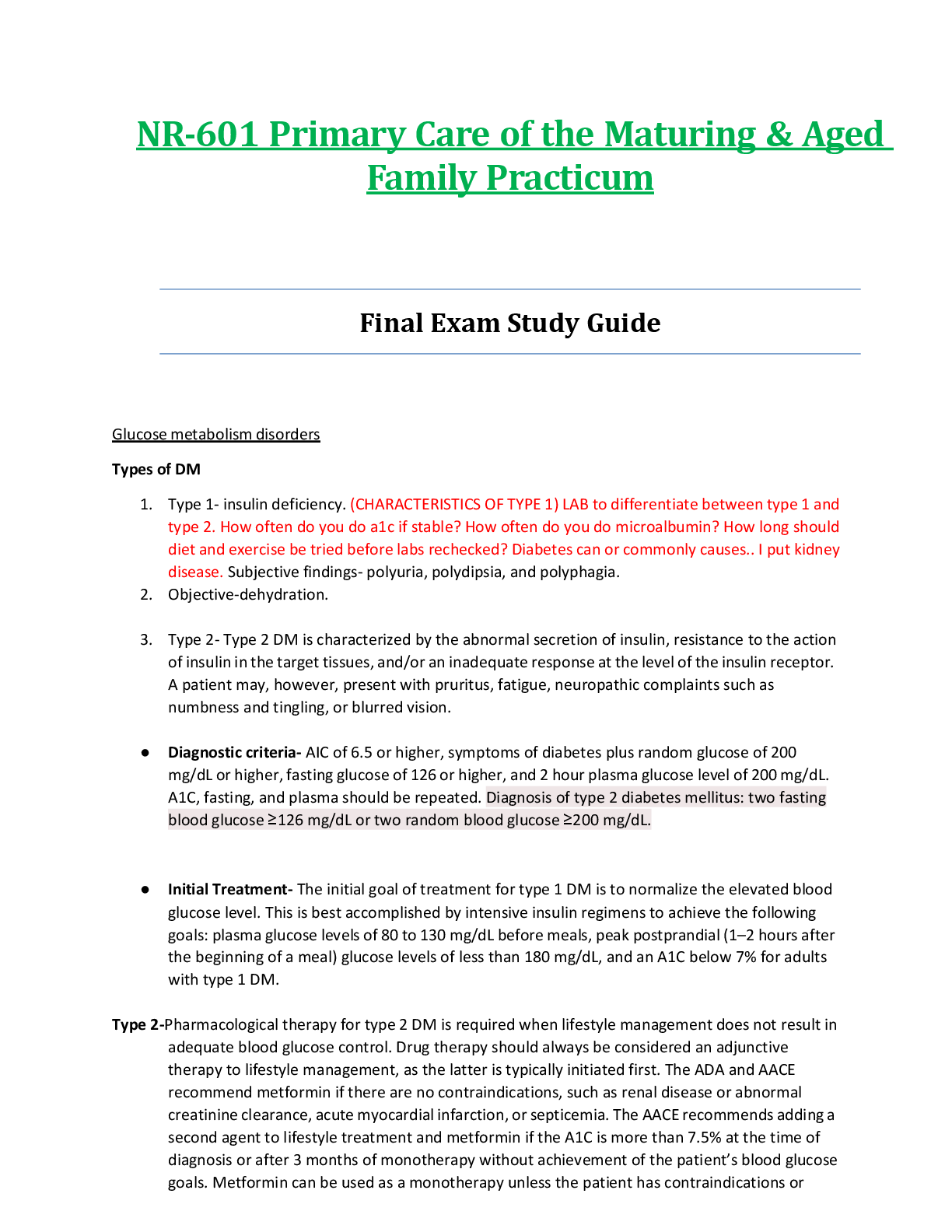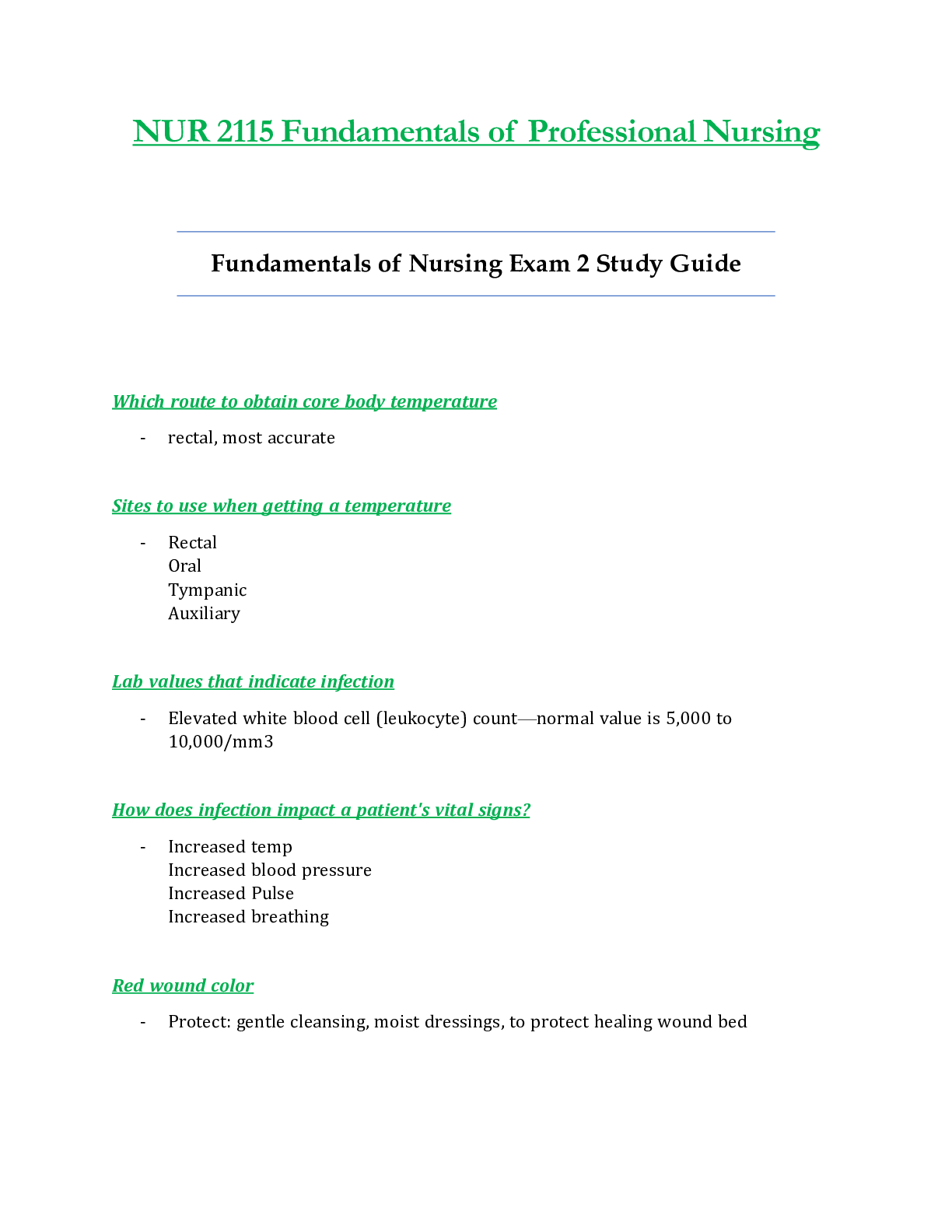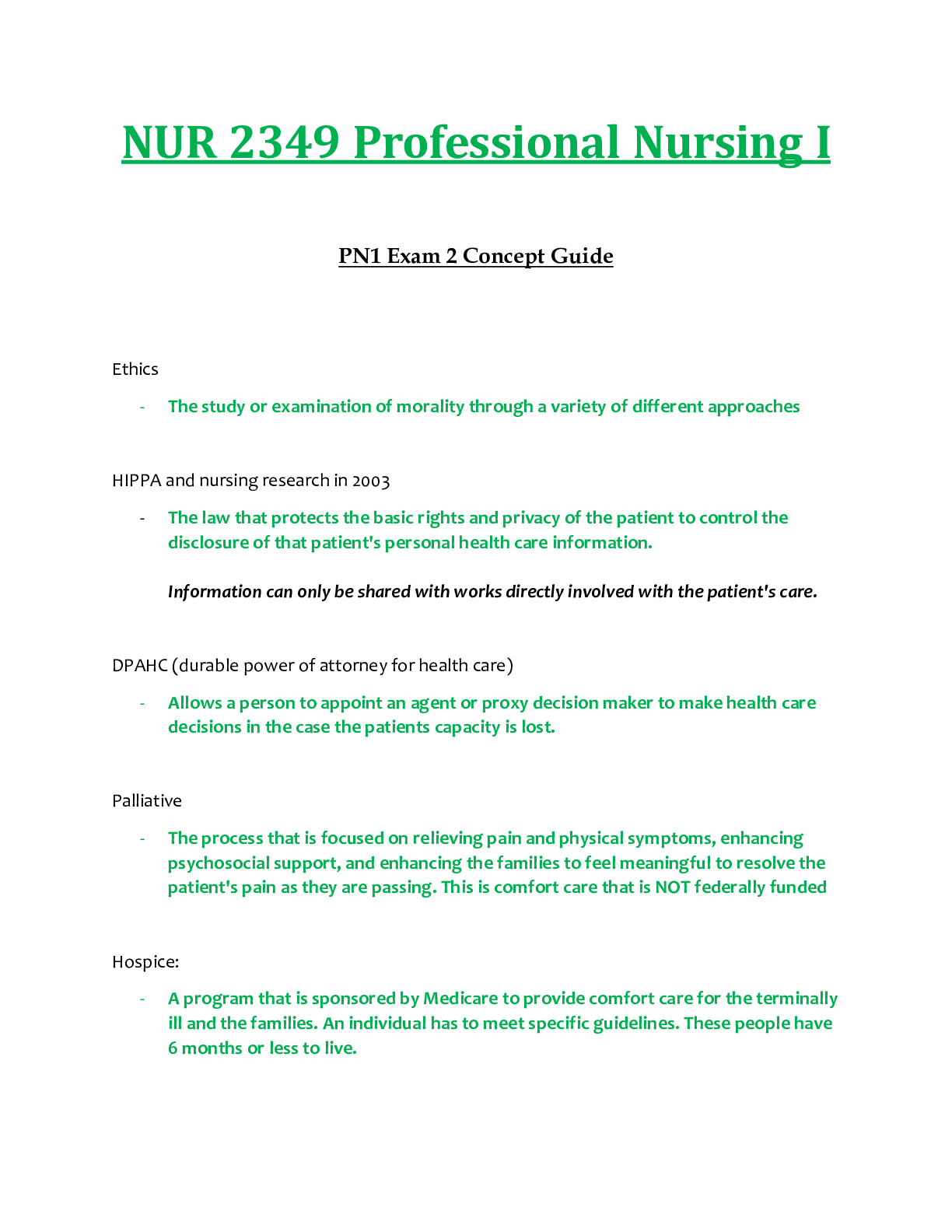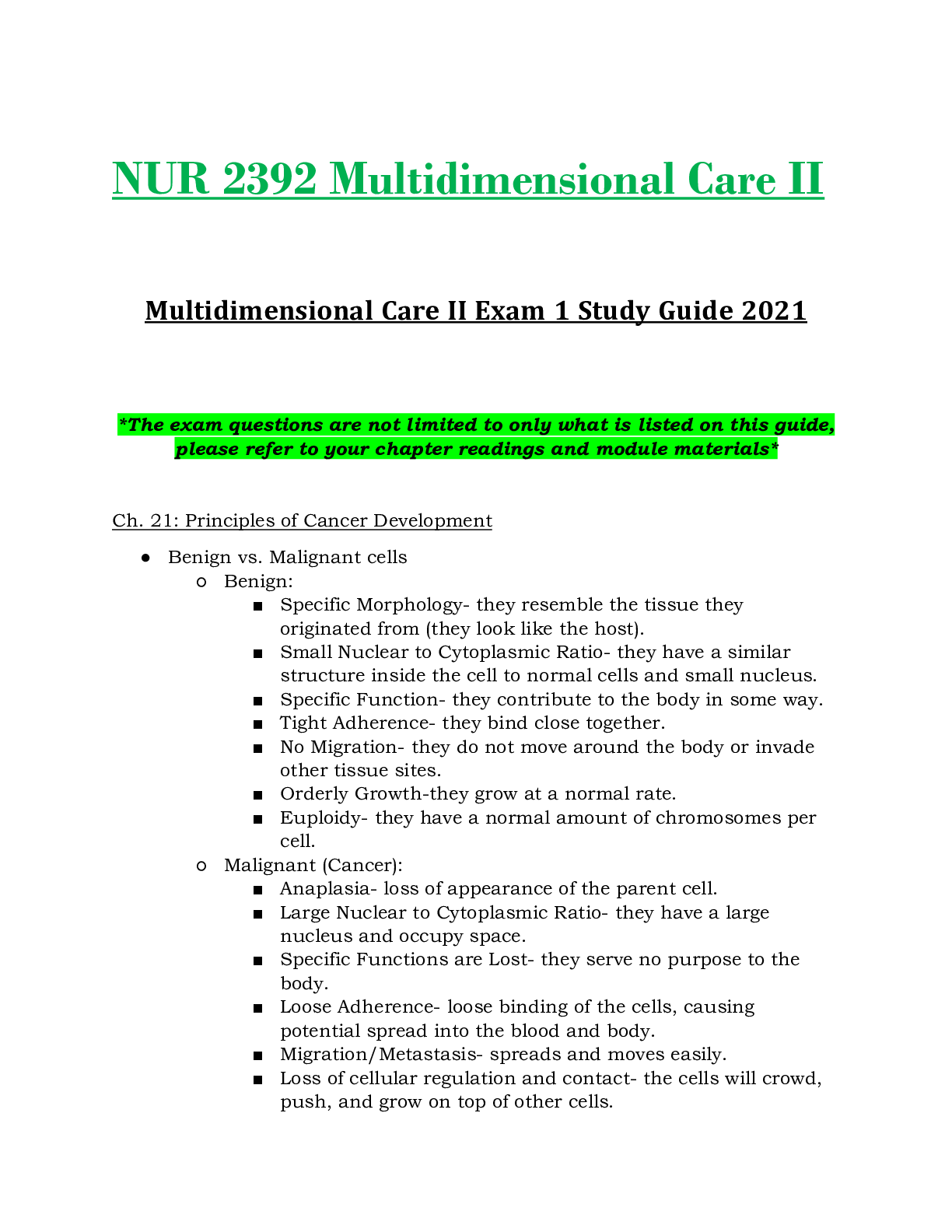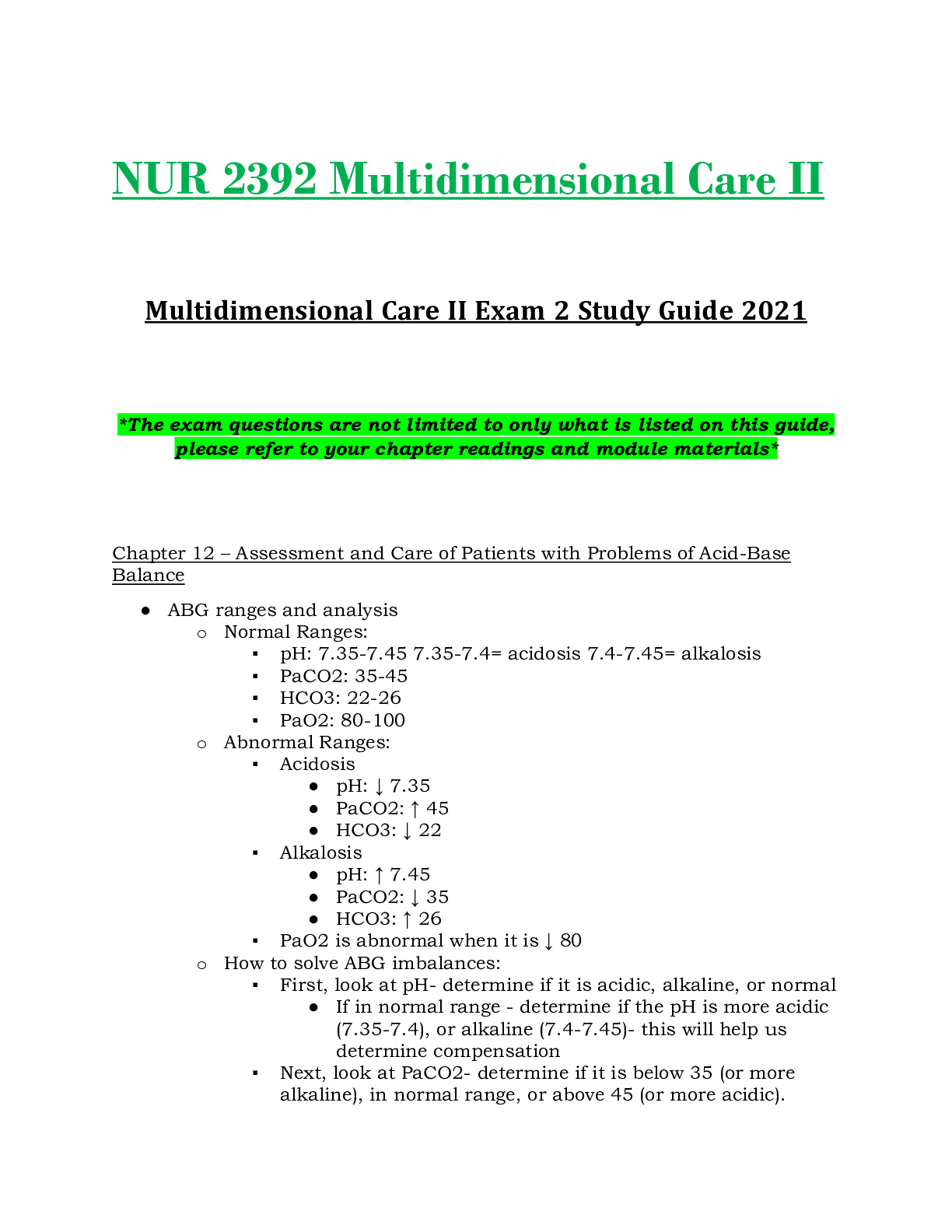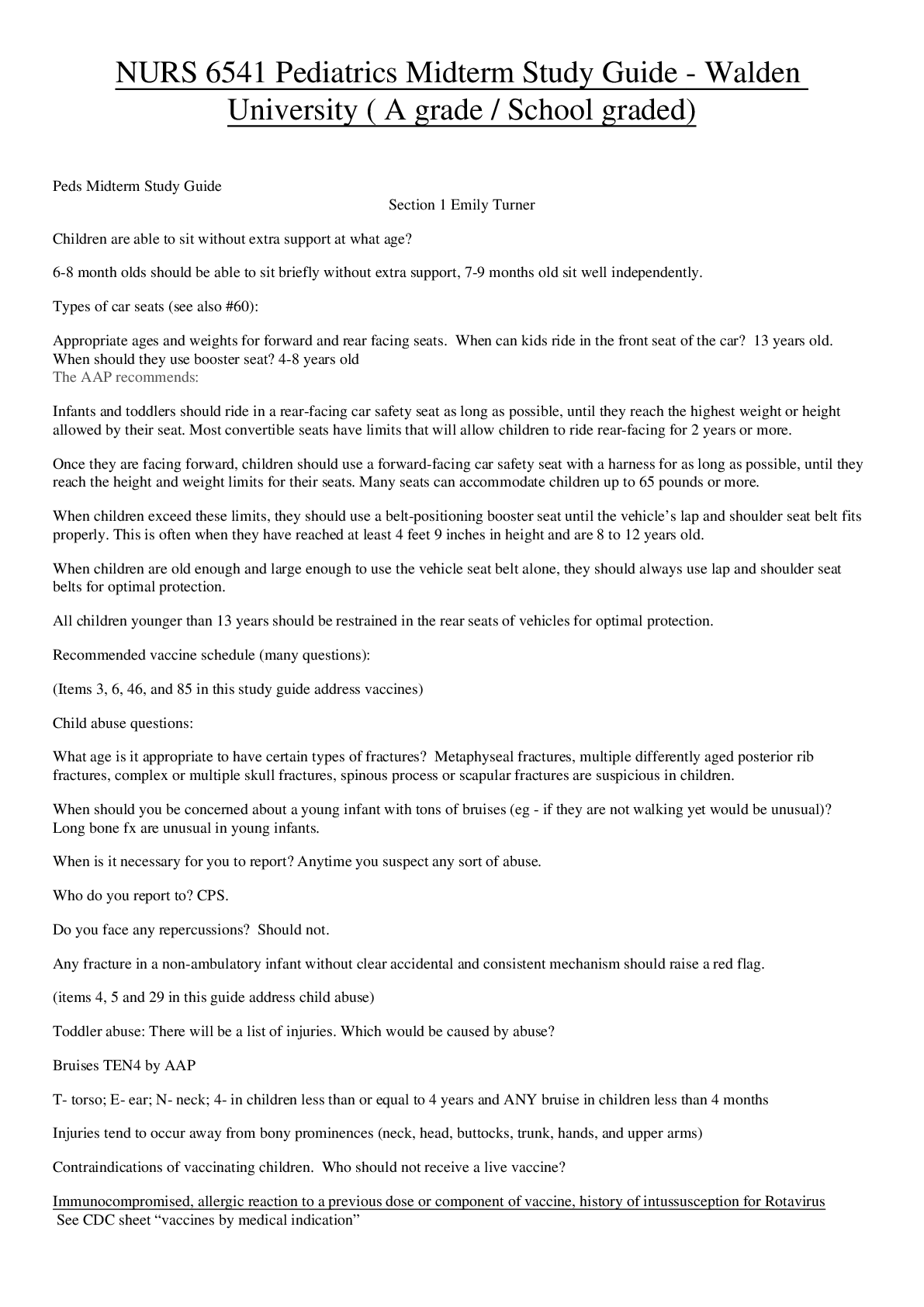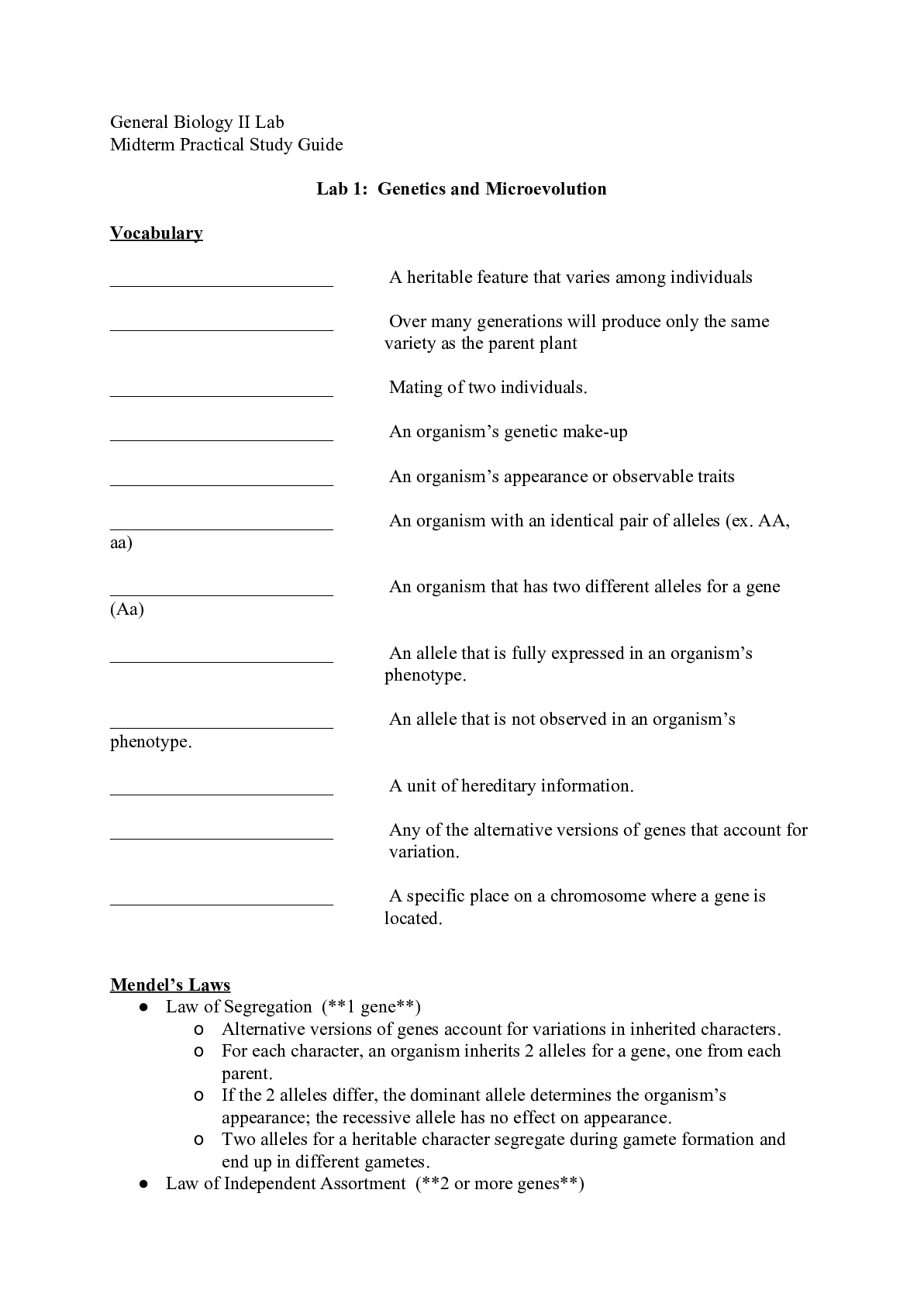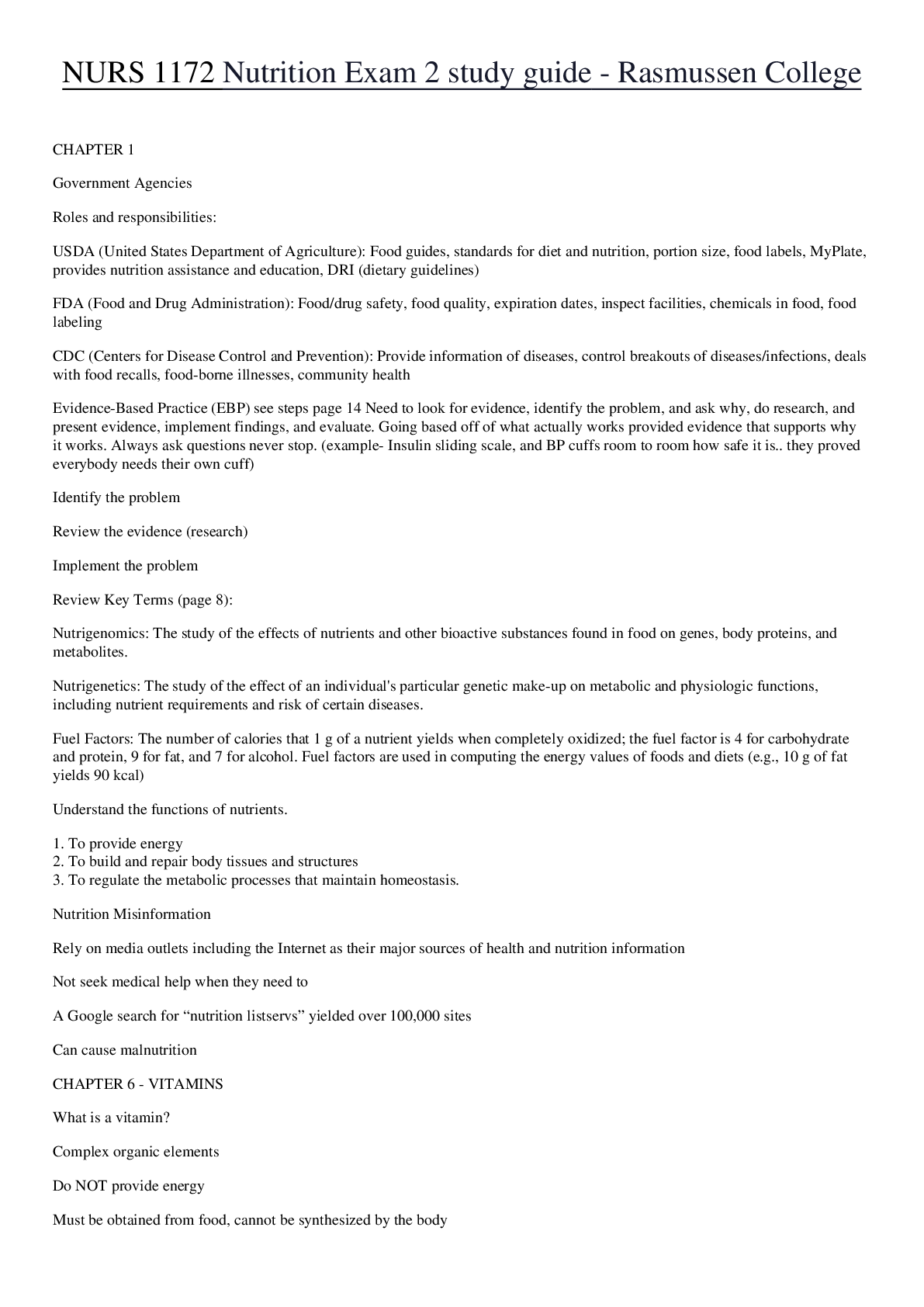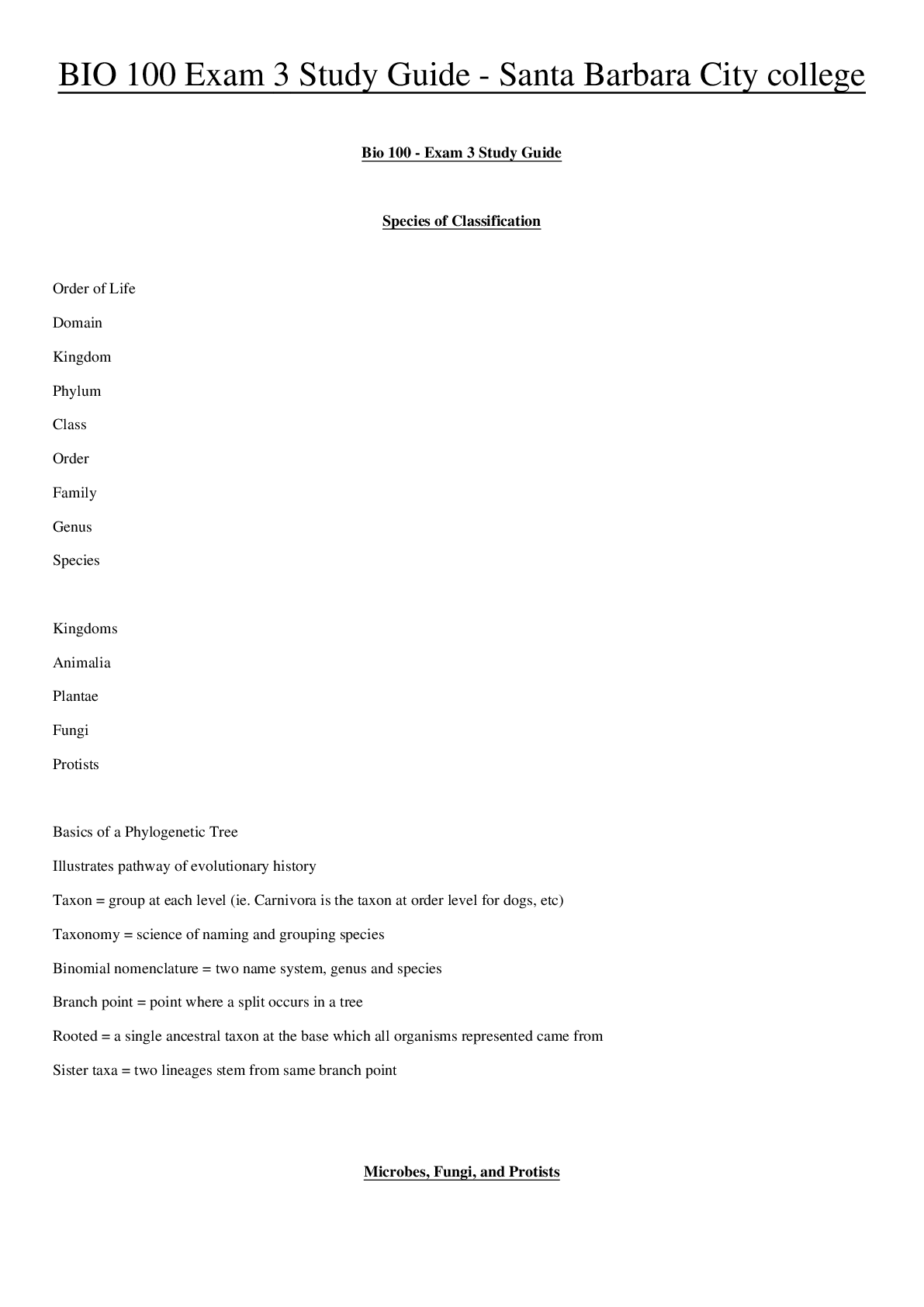*NURSING > STUDY GUIDE > NR228 / NR-228 Week 2 Study Guide - Chapters 4 & 7 & 8 : Nutrition, Health & Wellness - Chamberlain (All)
NR228 / NR-228 Week 2 Study Guide - Chapters 4 & 7 & 8 : Nutrition, Health & Wellness - Chamberlain
Document Content and Description Below
NR-228 Nutrition, Health & Wellness Week 2 Study Guide - Chapters 4 & 7 & 8 1. Carbohydrate: Chapter 4: Carbohydrates a) They are a convenient and economical source of calories for people throu... ghout the world. b) Carbohydrates are composed of organic compounds composed of carbon, hydrogen, and oxygen. i. The compounds consist of: 1. Simple carbohydrates like glucose and sucrose. 2. Complex carbohydrates like starch and dietary fiber. 2. What is the Dietary Reference Intake (DRI) and Acceptable Macronutrient Distribution Range (AMDR) for carbohydrates? a) DRI: 130g/day for adults ages 19 to 30. b) AMDR: 45% to 65% kcal intake per day, which come from primary complex carbohydrates. 3. According to your book Chapter 4 paragraph 3, what are the recommended average daily servings for carbohydrates a) Three quarters of MyPlate consist of foods that are excellent sources of carbs, which are vegetables, fruits and grains. i. 2 cups of fruits ii. 2 ½ cups of vegetables iii. 6 oz. of grains (at least ½ being whole grain, which provides an adequate amount of complex carbohydrates). 4. Review Box 4-1 and compare and contrast whole grains with refined grains. a) Whole grains: Contains the entire grain kernel (bran, germ, and endosperm) i. Example of whole grain products: 1. Amaranth, brown rice, buckwheat, bulgur (cracked wheat), millet, oatmeal, popcorn, rolled oats, quinoa, sorghum, triticale, whole grain barley, whole grain cornmeal, whole rye, whole wheat bread, whole wheat crackers, whole wheat pasta, whole wheat sandwich buns and rolls, whole wheat tortillas, wild rice, ready to eat breakfast cereals (whole wheat cereal flakes and muesli). b) Refined grains: They have been milled were the process removes the bran and the germ. Dietary fiber, iron, and many vitamins have been removed as well. i. Most refined grains have been enriched, meaning certain B vitamins (thiamin, riboflavin, niacin, and folic acid) and iron are added back in the process. ii. Fiber is not added in the enriched grains. iii. Example of refined grains products: 1. Cornbread, corn tortillas, couscous, crackers, flour tortillas, grits, noodles, pitas, pretzels, white bread, white sandwich buns and rolls, white rice, pastas (spaghetti and macaroni), and ready to eat breakfast cereals (corn flakes). [Show More]
Last updated: 2 years ago
Preview 1 out of 17 pages

Buy this document to get the full access instantly
Instant Download Access after purchase
Buy NowInstant download
We Accept:

Reviews( 0 )
$8.50
Can't find what you want? Try our AI powered Search
Document information
Connected school, study & course
About the document
Uploaded On
Apr 15, 2021
Number of pages
17
Written in
Additional information
This document has been written for:
Uploaded
Apr 15, 2021
Downloads
0
Views
87

